Snow Joe ION100V-21SB Handleiding
Snow Joe
Sneeuwblazer
ION100V-21SB
Bekijk gratis de handleiding van Snow Joe ION100V-21SB (24 pagina’s), behorend tot de categorie Sneeuwblazer. Deze gids werd als nuttig beoordeeld door 61 mensen en kreeg gemiddeld 5.0 sterren uit 31 reviews. Heb je een vraag over Snow Joe ION100V-21SB of wil je andere gebruikers van dit product iets vragen? Stel een vraag
Pagina 1/24

© 2020 by Snow Joe
®, LLC
All rights reserved. Original instructions. SAVE THESE INSTRUCTIONS
1
A Division of Snow Joe
®, LLC Model iON100V-21SB Form No. SJ-iON100V-21SB-880E-MR2
OPERATOR’S MANUAL
CORDLESS SNOW BLOWER
100-VOLT MAX* | 5.0 Ah | 21-INCH | LED LIGHTS
R
IMPORTANT!
Safety Instructions
All Operators Must Read These
Instructions Before Use
Read all instructions when using cordless snow blowers.
Basic safety precautions should always be followed to reduce
the risk of re, electric shock, and personal injury.
General Safety Rules
Notice the personal safety alert symbol used in this m
manual to draw your attention to a WARNING given
along with the particular operating instruction. This
means that the operation requires special ATTENTION,
CAUTION, and AWARENESS.
• Keep work area clean and well lit – Cluttered, dark areas
invite accidents.
• Use the right product – Do not use this machine for any
job except that for which it is intended.
• mCAUTION! – Exercise caution to avoid slipping or falling.
Wear protective footwear that will protect your feet and
improve your footing on slippery surfaces.
• Also use safety footwear, snug-tting Use safety glasses –
clothing, protective gloves, hearing and head protection.
• Stay alert – Watch what you are doing. Use common
sense. Do not operate the snow blower when you are tired
or under the inuence of alcohol or drugs.
• Store indoors – When not in use, the snow blower should
be kept dry and stored out of the reach of children in a high
or locked place.
• Maintain snow blower with care – Follow instructions for
lubricating and changing accessories.
mWARNING! Always disengage the switch bar lever,
and disconnect the battery pack; wait for all movement to
stop before making any adjustments, inspecting, servicing,
changing accessories, cleaning the snow blower, or when
any other dangerous conditions present. Any such operation
should be performed after revolving parts inside the snow
blower stop completely. Such preventive safety measures
reduce the risk of starting the power tool accidentally.
mWARNING! When replacing any parts, you must strictly
observe the instructions and procedures described in this user
manual. Special care should be paid to any rubber parts, since
these parts may increase the engine load and decrease its
mechanical power if damaged.
mWARNING! If you notice that the snow blower is not
running properly or hear abnormal sounds from the engine
when it is in use, immediately stop the machine, disconnect
the battery pack, and contact Snow Joe® + Sun Joe® customer
service center at 1-866-SNOWJOE (1-866-766-9563).
• Moving parts present risks – Keep your face, hair,
clothing, hands, and feet away from moving parts. All
guards and safety attachments must be installed properly
before using the unit. Shut o and disconnect the battery
pack before touching any parts other than the handles
and switch.
For all Snow Blowers
• Do not use on graveled surfaces unless the snow blower is
adjusted for such a surface in accordance with the manual.
• Keep children away. All visitors should be kept a safe
distance from work area.
• Dress properly. Do not wear loose clothing or jewelry. They
can be caught in moving parts.
• Wear rubber boots when operating the snow blower.
• Operation of the snow blower in the hand-held position is
unsafe, except in accordance with the special instructions
for such use provided in the operator's manual.
• Avoid accidental starting – Make sure the safety button is
o and the switch bar lever is disengaged before inserting
the battery pack into the unit. Do not transport the
snow blower with the safety button and the switch bar
lever engaged.
• Keep hands away from moving parts.
• Keep guards in place and in working order.
• Do not force the snow blower. Use the snow blower at
the rate for which it was designed to ensure optimal
performance and safe operation.
• Do not overreach. Keep proper footing and balance at
all times.
mWARNING! If the snow blower strikes any object,
follow these steps:
i) Stop the snow blower and remove the battery pack.
ii) Inspect for damage.
iii) Repair any damage before restarting and operating
the snow blower.

2
For Walk-behind
Snow Blowers
This snow blower is capable of amputating hands and feet
and throwing objects. Failure to observe the following safety
instructions could result in serious injury.
Training
1. Read, understand and follow all instructions on the
machine and in the manual before operating this unit. Be
thoroughly familiar with the controls and the proper use of
the equipment. Know how to stop the unit and disengage
the controls quickly.
2. Never allow children to operate the equipment.
Never allow adults to operate the equipment without
proper instruction.
3. Keep the area of operation clear of all persons, particularly
small children.
4. Exercise caution to avoid slipping or falling. Especially
when operating the snow blower in reverse.
Preparation
1. Thoroughly inspect the area where the equipment is to be
used and remove all doormats, sleds, boards, wires, and
other foreign objects.
2. Do not operate the equipment without wearing adequate
winter garments. Avoid loose tting clothing that can get
caught in moving parts. Wear footwear that will improve
footing on slippery surfaces.
3. Never attempt to make any adjustment while the
motor is running, except when specically
recommended by manufacturer.
4. Always wear safety glasses or eye shields during
operation or while performing an adjustment or repair
to protect eyes from foreign objects that may be thrown
from the machine.
Operation
1. Do not put hands or feet near or under rotating parts.
Keep clear of the discharge opening at all times.
2. Exercise extreme caution when operating on or crossing
gravel drives, walks, or roads. Stay alert for hidden
hazards or trac.
3. After striking a foreign object, stop the motor, remove
the battery, thoroughly inspect the snow blower for any
damage, and repair the damage before restarting and
operating the snow blower.
4. If the unit start to vibrate abnormally, stop the motor and
check immediately for the cause. Vibration is generally a
warning of trouble.
5. Stop the motor whenever you leave the operating position,
before unclogging the auger/impeller housing or discharge
chute, and when making any repairs, adjustments or
inspection.
6. When cleaning, repairing, or inspecting the snow blower,
stop the motor and make sure the auger/impeller and all
moving parts have stopped.
7. Do not run the motor indoors. Except when starting
the motor and for transporting the snow blower in or
out of the building. Open the outside doors. Exhaust
fumes are dangerous.
8. Exercise extreme caution when operating on slopes.
9. Never operate the snow blower without proper guards and
other safety protective devices in place and working.
10. Never direct the discharge toward people or areas
where property damage can occur. Keep children and
others away.
11. Do not overload the machine at high transport speeds
on slippery surfaces. Look behind and use care when
operating in reverse.
12. Do not overload the machine capacity by attempting to
clear snow at too fast a rate.
13. Disengage the power to the auger/impeller when snow
blower is transported or not in use.
14. Use only attachment and accessories approved by the
manufacturer of the snow blower.
15. Never operate the snow blower without good visibility or
light. Always be sure of your footing, and keep a rm hold
on the handle. Walk; Never run.
16. Never touch a hot motor.
Clearing a Clogged Discharge Chute
mWARNING! Rotating blades can cause serious injury.
Never attempt to unclog or clean unit while auger is running.
Hand contact with the rotating impeller/auger inside the
discharge chute is the most common cause of injury
associated with snow blowers. Never use your hand to clean
out the discharge chute.
To clean the chute:
1. SHUT THE MOTOR OFF AND REMOVE THE
BATTERY PACK.
2. Wait 10 seconds to be sure the auger blades have
stopped completely.
3. Always use a clean-out tool, such as Snow Joe®
universal chute clean-out tool (Model SJCOT). Visit
snowjoe.com to purchase.
Maintenance and Storage
1. Check shear bolts and other bolts at frequent intervals
for proper tightness to be sure the equipment is in safe
working condition.
2. Always refer to the operator's manual for important details
if the snow blower is to be stored for an extended period.
3. Maintain or replace safety and instruction labels,
as necessary.
4. Run the machine a few minutes after plowing snow to
prevent freeze-up of the auger/impeller.

3
Battery + Charger
Safety Instructions
We pay a great deal of attention to the design of every battery
pack to ensure that we supply you with batteries that are safe,
durable and have a high energy density. The battery cells have
a wide range of safety devices. Each individual cell is initially
formatted and its electrical characteristic curves are recorded.
This data is then used exclusively to be able to assemble the
best possible battery packs.
Despite all the safety precautions, caution must always be
exercised when handling batteries. The following points must
be obeyed at all times to ensure safe use. Safe use can only
be guaranteed if undamaged cells are used. Incorrect handling
of the battery pack can cause cell damage.
IMPORTANT! Analyses conrm that incorrect use and poor
care of high-performance batteries are the main factors
responsible for personal and/or product damage.
mWARNING! Use only approved replacement batteries;
other batteries may damage the cordless snow blower
and cause it to malfunction, which can lead to serious
personal injury.
mCAUTION! To reduce the risk of injury, charge the
iON100V-5AMP lithium-ion battery pack only in its designated
lithium-ion charger, the iON100V-RCH. Other types of chargers
present risk of re, personal injury and damage. Do not wire
a battery pack to a power supply plug or car cigarette lighter.
Such misuse will permanently disable or damage the
battery pack.
• Avoid dangerous environments – Do not charge the
battery pack in rain, snow or in damp or wet locations.
Do not use the battery pack or charger in the presence of
explosive atmospheres (gaseous fumes, dust or ammable
materials) because sparks may be generated when inserting
or removing the battery pack, which could lead to a re.
• Charge in a well-ventilated area – Do not block the
charger vents. Keep them clear to allow for proper
ventilation. Do not allow smoking or open ames near a
charging battery pack. Vented gases may explode.
NOTE: The safe temperature range for the battery is -4°F
(-20°C) to 113°F (45°C). Do not charge the battery outside
in freezing weather; charge it at room temperature.
• Maintain charger cord – When unplugging the charger, pull
the plug, not the cord, from the receptacle to reduce the
risk of damage to the electrical plug and cord. Never carry
the charger by its cord or yank it by the cord to disconnect
it from the receptacle. Keep the cord away from heat, oil
and sharp edges. Make sure the cord will not be stepped
on, tripped over or subjected to damage or stress when the
charger is in use. Do not use the charger with a damaged
cord or plug. Replace a damaged charger immediately.
• Do not use an extension cord unless it is absolutely
necessary – Using the wrong, damaged or improperly
wired extension cord poses a risk of re and electric shock.
If an extension cord must be used, plug the charger into a
properly wired 18 gauge or larger extension cord with the
female plug matching the male plug on the charger. Make
sure that the extension cord is in good electrical condition.
• Charger iON100V-RCH is rated for 100 – 120 volt AC
only – The charger must be plugged into an
appropriate receptacle.
• Use only recommended attachments – Use of an
attachment not recommended or sold by the battery
charger or battery pack manufacturer may result in risk of
re, electric shock or personal injury.
• Unplug charger when not in use – Make sure to remove
battery packs from unplugged chargers.
mWARNING! To reduce the risk of electric shock,
always unplug the charger before performing any cleaning or
maintenance. Do not allow water to ow into the charger. Use
a Ground Fault Circuit Interrupter (GFCI) to reduce
shock hazards.
• Do not burn or incinerate the battery pack – Battery
packs may explode, causing personal injury or damage.
Toxic fumes and materials are created when battery packs
are burned.
• Do not crush, drop or damage the battery pack – Do not
use the battery pack or charger if they have sustained a
sharp blow, been dropped, run over or have been damaged
in any way (i.e. pierced with a nail, hit with a hammer,
stepped on, etc.).
• Do not disassemble – Incorrect reassembly may pose
a serious risk of electric shock, re or exposure to toxic
battery chemicals. If the battery or charger are damaged,
contact an authorized Snow Joe® + Sun Joe® dealer or
call the Snow Joe® + Sun Joe® customer service center at
1-866-SNOWJOE (1-866-766-9563) for assistance.
• Never let a Battery chemicals cause serious burns –
damaged battery pack contact the skin, eyes or mouth.
If a damaged battery pack leaks battery chemicals, use
rubber or neoprene gloves to safely dispose of it. If skin
is exposed to battery uids, wash the aected area with
soap and water and rinse with vinegar. If eyes are exposed
to battery chemicals, immediately ush with water for 20
minutes and seek medical attention. Remove and dispose
of contaminated clothing.
• Do not short circuit – A battery pack will short circuit if
a metal object makes a connection between the positive
and negative contacts on the battery pack. Do not place a
battery pack near anything that may cause a short circuit,
such as paper clips, coins, keys, screws, nails and other
metallic objects. A short-circuited battery pack poses a risk
of re and severe personal injury.
• Store your battery pack and charger in a cool, dry
place – Do not store the battery pack or charger where
Product specificaties
| Merk: | Snow Joe |
| Categorie: | Sneeuwblazer |
| Model: | ION100V-21SB |
Heb je hulp nodig?
Als je hulp nodig hebt met Snow Joe ION100V-21SB stel dan hieronder een vraag en andere gebruikers zullen je antwoorden
Handleiding Sneeuwblazer Snow Joe

27 Februari 2024

3 Augustus 2023

16 Juni 2023

16 Juni 2023

12 Juni 2023

29 Mei 2023

26 Mei 2023

25 Mei 2023

21 Mei 2023

14 Mei 2023
Handleiding Sneeuwblazer
- Toro
- Eliet
- Sun Joe
- Jonsered
- BeamZ
- Hecht
- Yato
- Cotech
- American DJ
- Alpina
- Al-ko
- Husqvarna
- Massimo
- DJPower
- Einhell
Nieuwste handleidingen voor Sneeuwblazer
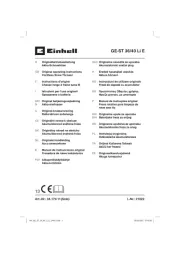
1 September 2025
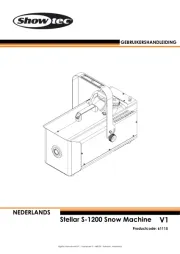
5 Augustus 2025
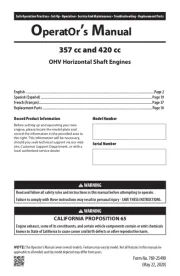
4 Augustus 2025
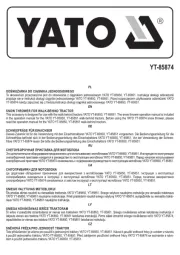
15 Juli 2025
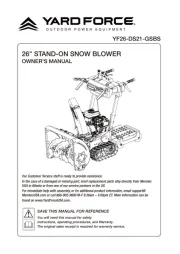
20 Mei 2025
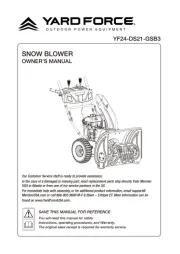
20 Mei 2025
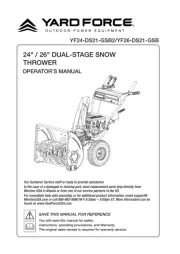
15 Mei 2025
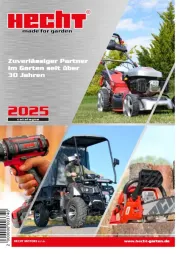
27 Januari 2025
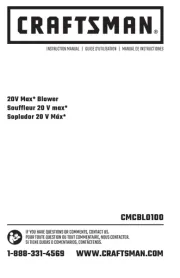
27 Januari 2025

9 December 2024